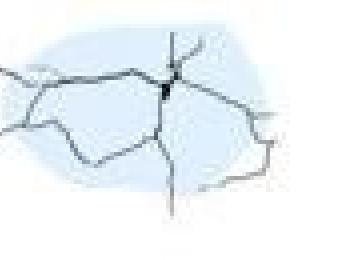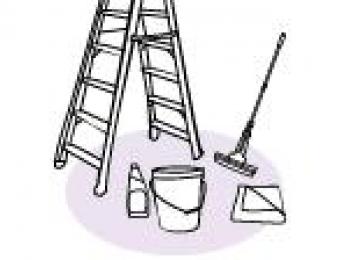
Want to add a little flair and colour to a room? If you decide not to use paint to decorate your interior walls, wallpaper is an excellent decorative substitute.
What is wallpaper?
In its most basic form, wallpaper consists of large, thick sheets of paper that usually have designs printed on them. They can be pasted on walls and ceilings for decorative purposes, as well as to hide any flaws or imperfections. The styles and colours of wallpaper available are unimaginably varied and will cater to any budget or style preference.
What types of wallpaper are there?
When wallpaper first became popular in Renaissance Europe, they literally consisted of nothing more than large sheets of paper. In modern days, the paper is usually treated in some form to make it more durable and attractive. Of these, vinyl-based wallpapers are highly preferred due to its low maintenance and easy removal.
The most popular types of wallpaper include:
Vinyl coated paper - This is paper that has been coated with an acrylic type vinyl or polyvinyl chloride (PVC). It is washable and relatively easy to strip, making it low maintenance. It is also more grease and water-resistant than normal paper, which makes it suitable for kitchens and bathrooms.
Coated fabric - Instead of paper, this consists of a fabric substrate that has been coated with an acrylic type vinyl or polyvinyl chloride (PVC). This type of wallpaper is considered more 'breathable' and is preferable for low-humidity areas such as living rooms.
Paper backed vinyl/solid sheet vinyl - This is similar to vinyl coated paper, except that it is a layer of paper or pulp backed to a decorative vinyl surface instead of having liquid vinyl painted on the paper. Similarly, it is easy to maintain and able to be used in almost any type of area and climate.
Fabric backed vinyl - This consists of a layer of fabric laminated to a layer of solid vinyl. There are two types of wallpaper in this category:
- Solid vinyl - This type of wallpaper consists of a vinyl film laminated to a piece of paper or fabric. As the vinyl is in solid and not liquid form, it is more durable and easier to maintain.
- Paper - This is a layer of decorative paper that does not necessarily have a protective layer laminated to it. The types of wallpaper classified under this category are extremely varied, so be sure to check with your manufacturer before purchasing.
How do you maintain wallpaper?
Depending on the type of wallpaper and the area that the wallpaper is plastered in, there can be a number of ways to clean and maintain wallpaper.
It's very important to determine what sort of wallpaper you have before you try to clean it. There are washable, scrubable, and non-washable wallpapers. If you aren't sure, go to your manufacturer and get them to label it. You can also do a small spot test yourself by wiping a damp cloth over an inconspicuous spot such as behind furniture - if the colour doesn't change, that generally means it's safe to clean. In general, you can reduce the dust by vacuuming the wallpaper periodically, or brushing it from top to bottom with a vacuum cleaner wall brush.
Washable wallpapers can be cleaned with a damp cloth or sponge. Scrubbable wallpapers, usually vinyl types, can be cleaned by scrubbing with a foam cleanser or all-purpose detergent. Abrasive liquids or cleansers are not encouraged as they can scratch the vinyl. For non-washable wallpapers, there are commercial wallpaper cleaners that resemble putty in appearance and can be rubbed over the surface to remove grime. Make sure you follow the instructions closely.
|
Advantages
|
Disadvantages
|




